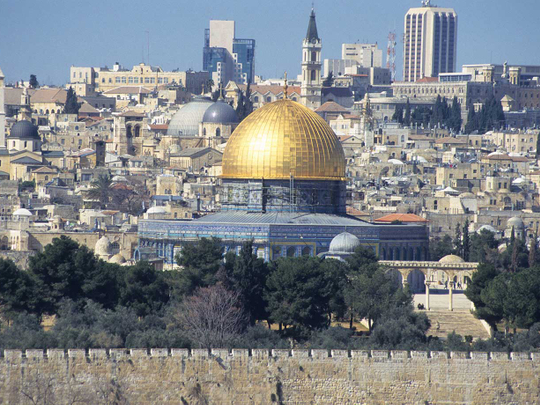
New York: The Trump administration is moving faster than expected to transfer the US Embassy to Occupied Jerusalem from Tel Aviv by 2019, senior officials said on Friday, despite insisting last month that the move would not happen until the end of President Donald Trump’s term.
The administration’s plans, following Trump’s recognition of Occupied Jerusalem as the capital of Israel, suggest it no longer cares about cushioning the blow of the new policy, which has drawn angry protests from Palestinians and other Arabs and cast Trump’s peacemaking ambitions into doubt.
Prime Minister Benjamin Netanyahu of Israel first broached the prospect of a faster move on Wednesday, telling reporters that the embassy would be moved “in the course of the year.”
That put him at odds with Trump, who hours later said, “We’re not really looking at that.”
It was not clear whether Trump’s advisers had briefed him on the new timetable until Thursday.
Officials said he was referring to the construction of an entirely new embassy compound in Occupied Jerusalem, which Secretary of State Rex W. Tillerson predicted would be completed “probably no earlier than three years out, and that’s pretty ambitious.”
But the State Department has since settled on a more modest plan to convert an existing consular building in Arnona, a neighbourhood in Occupied Jerusalem.
That will reduce the cost of the project and allow Ambassador David M. Friedman and his staff to move there as early as next year.
The timing of the move has caused tensions between Tillerson and the White House.
Friedman, who worked as a lawyer for Trump, pushed to move the embassy this year, and Trump’s son-in-law and senior adviser, Jared Kushner, who oversees the president’s Middle East peace initiative, backed him.
But Tillerson petitioned Trump in a meeting on Thursday for more time to upgrade the security of the building, and the president agreed.
“What you’ll see from the secretary is that we will do this at the pace of security, not at the pace of politics,” said the undersecretary of state for public diplomacy and public affairs, Steven Goldstein.
The timetable for moving the embassy became a charged footnote to Trump’s landmark decision. When the president signed a proclamation in December recognising Occupied Jerusalem as the capital, he quietly signed another document waiving a congressional demand that the US move the embassy to Occupied Jerusalem within six months.
At the time, White House officials said the decision was driven by practical and logistical decisions. The State Department, they said, could not open a functioning embassy in Occupied Jerusalem on the timetable stipulated under a 1995 law that requires the president to sign a national security waiver every six months to keep the embassy in Tel Aviv.
Since Trump’s announcement, however, relations between the US and the Palestinians have curdled. The Palestinian Authority president, Mahmoud Abbas, vowed never again to take part in peace negotiations brokered by the United States.
The administration, in turn, said it would withhold $65 million - or more than half the funding that the US generally provides - to a United Nations agency that aids Palestinian refugees.












